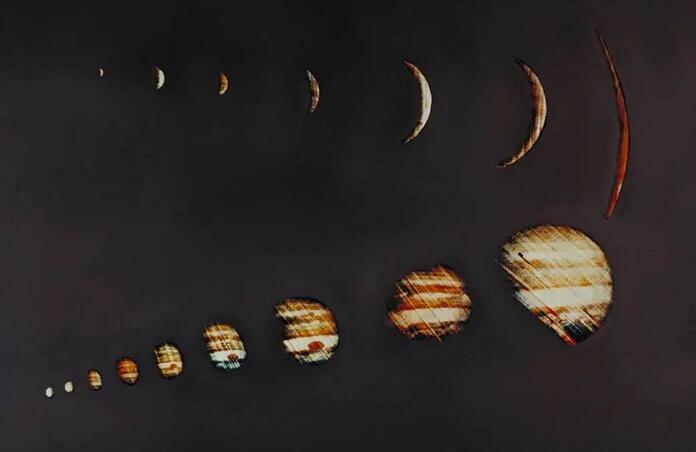Pioneer 10

This month is the 50th anniversary of Pioneer 10 at Jupiter. The spacecraft made its closest approach to Jupiter on 4 December 1973. The intense radiation environment around Jupiter generated phantom commands in the spacecraft electronics, but nothing catastrophic happened as a result, since planners had prepared contingency commands for such cases. At closest approach, Pioneer 10 was 132,252 km (82,178 miles) away from the Jovian cloud tops.
Pioneer 10 was the first spacecraft to pass through the asteroid belt, and the first spacecraft to return close-up images, and in-situ data, from Jupiter. It sent back 500 images of the planetary encounter, all of them reconstructed from the narrow strips observed by a narrow angle imaging photopolarimeter, which scanned Jupiter as the spacecraft spun.
In effect, Pioneer 10 was a pathfinder mission for the Voyager spacecraft (Voyager 1 on 5 March 1979, Voyager 2 on 9 July 1979), proving that spacecraft could survive the experience. It was the success of Pioneer 10 that opened the door for the Voyagers, and subsequent deep space exploration of the solar system.
Pioneer 10 remained in communication with Earth until 23 January 2003, when it was 80 AU from Earth, by which time power generation levels were too low for the communication system.
The picture here is a montage released by NASA for the 40th anniversary in 2013. Pioneer 10 did not have a camera onboard, it had a narrow angle imaging photopolarimeter. The montage here shows image data returned by Pioneer 10 as it approached Jupiter, and then flew behind it. The pictures of Jupiter show how the raw data came back, not as images the way we see them today, but as parallel strips, which then need to be processed together to create a clean image.
We are spoiled in a way, by the high quality images returned by higher quality cameras, such as Jupiter images from Voyager, or Galileo, or from Juno, now orbiting Jupiter. Or from Cassini at Saturn. But remember, what you see here is how the early spacecraft images looked, and they were state of the art for the time, the best anyone had ever seen. We were all spellbound to see them.
Sources
https://en.wikipedia.org/wiki/Pioneer_10 (Wikipedia)
https://solarsystem.nasa.gov/missions/pioneer-10/in-depth/ (Pioneer 10, in depth - NASA Solar System Exploration)
https://nssdc.gsfc.nasa.gov/nmc/spacecraft/display.action... (National Space Science Data Coordinated Archive)
https://www.nasa.gov/.../45-years-ago-pioneer-10-first-to... (“45 Years Ago, Pioneer 10 First to Explore Jupiter” - NASA, 3 December 2018)
https://www.nasa.gov/.../forty-years-ago-pioneer-10... (“Forty Years Ago, Pioneer 10's Closest Approach to Jupiter” - NASA, 4 December 2013; Image source)
https://www.nasa.gov/.../ames/missions/archive/pioneer.html (The Pioneer Missions - NASA Ames, 26 March 2007)
https://en.wikipedia.org/wiki/Exploration_of_Jupiter (Exploration of Jupiter - Wikipedia)
https://nssdc.gsfc.nasa.gov/plan.../planets/jupiterpage.html (Exploration of Jupiter - National Space Science Data Coordinated Archive)
https://www.jpl.nasa.gov/.../slideshow/exploring-jupiter/ (Student slideshow, “Exploring Jupiter” - JPL)
Reposted from Tim Thompson, Retired Chief Astronomer, NASA JPL
